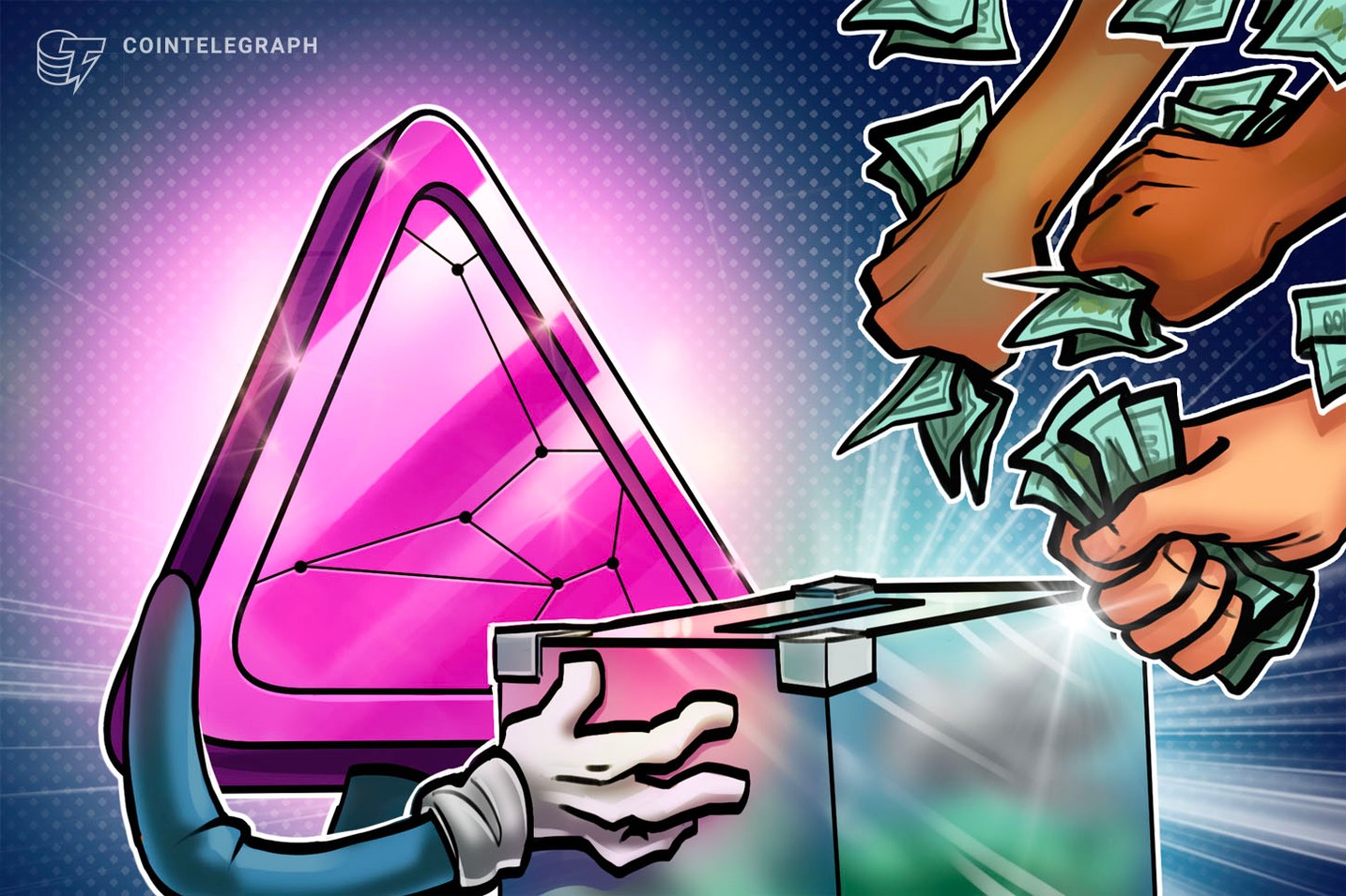‘Patron NFTs’ could be answer to ‘broken’ crypto fundraising model — Kain Warwick
Infinex’s “Patron NFT” sale could be a new model to bootstrap fledgling crypto projects while avoiding the unfair playing field of traditional venture capital funding, its founder, Kain Warwick, told Cointelegraph.
“Patronage” is the new strategy coined by Warwick with Infinex — which, in theory, allows all participants to own a slice of a crypto project on the same terms.
Warwick said the current venture capital model is plagued by “skewed incentives,” where those with deep pockets are handed a “100x better deal than everyone else.”
“This is not a company, this is an open-source project, so we needed something different. I think that people have realized that the current incentive structure is broken.”
It’s not “egalitarian” unless “everyone’s getting the same deal” — or as close to it as possible, Warwick added.
Patronage refers to the act of providing support — financial or non-financial — to an individual, business, or cause without expecting anything in return.
To own a slice of Infinex, Warwick issued “Patron” non-fungible tokens to the public, including VCs and retail, to spark community interest in its vision to offer a non-custodial, unified UX layer across all blockchains and decentralized finance apps.
In short, Infinex aims to dethrone crypto exchanges as the first and main point of contact for new and existing crypto users.
Obtaining a “wide distribution” of Patron NFT investors in this way was far more important than focusing on winning over a few VC firms — which Warwick said he even initially contemplated excluding.
Source: Kain Warwick
Memecoins, market moves and big ambitions — Interview with Alex from Sundog
Sundog’s developer discusses memecoin’s approach to building a strong community on the Tron network, its deflationary model and future growth strategies.
The memecoin market is experiencing renewed interest as projects seek to build stronger communities and innovative utilities.
Sundog, a dog-themed memecoin on the Tron blockchain, is one such project aiming to grow its ecosystem and expand its user base. With over 500,000 holders and features like a deflationary model and the Sunbot Telegram trading tool, Sundog is positioning itself for further growth.
In this interview, Alex, the developer of the Sundog memecoin, discusses the memecoin’s rapid rise, its picking up Tron as the primary network, and the strategies behind its ambitious goal of reaching a $5 billion market cap. They also explore how partnerships, community engagement and new technologies are shaping Sundog’s future in the memecoin space.
Cointelegraph: What factors do you believe are driving the current resurgence of memecoins, and how does Sundog fit into this trend?
Alex: Memes, unlike non-fungible tokens (NFTs), are able to cut across both Web2 and Web3. They are a social currency — a way for friends and communities to come together and have fun, discover and (hopefully) make gains. Many in the Sundog community have made profits, and this is important to us.
We have also shown great price resilience, even when Bitcoin (BTC) has fallen. This resilience is because of our team’s commitment to community and building a meme that can carry the weight of the Tron ecosystem on its back, a meme that can reach a $5 billion market cap. Our community has grown significantly, with hundreds of thousands of onchain holders, showcasing the widespread adoption and trust in Sundog.
CT: Why did you choose the Tron ecosystem to launch Sundog, and what unique advantages does it offer over other blockchain platforms?
Alex: Tron appealed because of a few factors. Where Solana was a crowded marketplace that was hard to stand out in, Tron was a blue sky and we felt that we wanted to be in an ecosystem where we could make a difference and put in the work and creativity to launch a chain-leading meme.
In addition, we felt that the chain had users and its founder, Justin Sun, could go to great lengths to build and support the ecosystem. We were proven right, and the support from Sun Pump and the ecosystem has been amazing. We find the teams fast-moving, quick to listen to community suggestions and keen to evolve and push the meme ecosystem to new heights. This strategy has paid off, as evidenced by our highest spot trading volume reaching an impressive $231 million.
CT: Can you explain how the Sunbot trading app and other technical innovations support Sundog’s deflationary model?
Alex: When we launched Sunbot, we aimed to create the infrastructure to allow Telegram users to trade Tron memecoins easily. We then decided to use all profits for 30 days to buy SUNDOG tokens from the market and burn them, thus lowering supply and creating a deflationary meme model — something that has been really well received by the community. This innovative approach, combined with our commitment to allocate 50% of net revenue for SUNDOG buybacks and burns, ensures a continuous deflationary pressure on the token supply.
CT: What were the key drivers behind Sundog's rapid rise to a $300 million market cap, and what strategies are you employing to reach your $5 billion target?
Alex: We believe this is a realistic goal from the current market cap. Our price has risen rapidly because we managed to tap into the untapped Tron community and persuade a lot of other memecoin holders from Solana to migrate to SUNDOG. The trust was built, and it showed.
We also showed a lot of price resilience, and I think people noticed that, which has persuaded new entrants to come into our project at every level of our growth. We also did a significant airdrop of $2 million SUNDOG to the Tron community.
In the end, Infinex raised $65.3 million selling Patron NFTs to several VC firms, industry leaders, and hundreds of community members — though Warwick said he would have liked to see that sum reach $100 million.
Wintermute Ventures, Framework Ventures, Near Foundation, Synthetix, Solana Labs CEO Anatoly Yakovenko and Ethereum Foundation researcher Tim Beiko were among the prominent participants of Infinex’s Patron NFT sale.
Key figures from Infinex’s Patron NFT sale. Source: Infinex
Warwick noted that Infinex conducted a pre-access sale for these key community members, but it was facilitated on the same terms.
Warwick said he’s received a “healthy” push from participants who are keen to know when the integrations will happen:
“It’s not one token anymore. It’s like when Jupiter, when Uniswap, when 1inch, when [are] all of these projects that they want to see [being] integrated.”
Crypto fundraising amounts are falling
Despite market prices recovering to near late-2021 highs, crypto projects have seen far less funding this time around.
Crypto funding has hovered slightly below $3 billion in each quarter of 2024, which is dwarfed by the $12 billion raked in during the fourth quarter of 2021 and the first quarter of 2022, a RootData chart shows.
Quarterly cryptocurrency venture funding amounts since January 2021. Source: RootData






